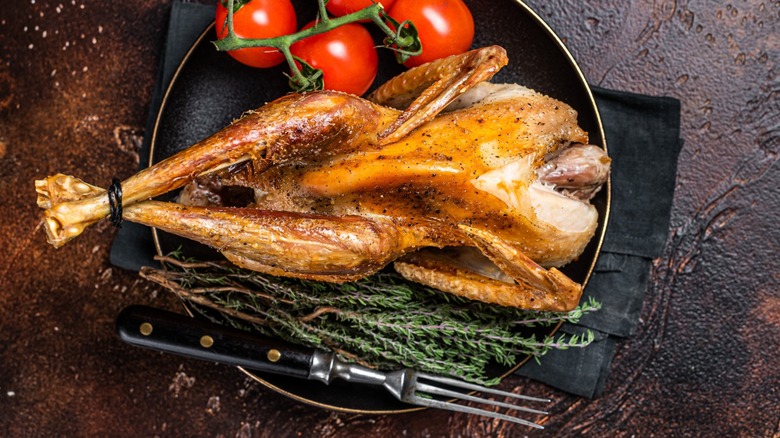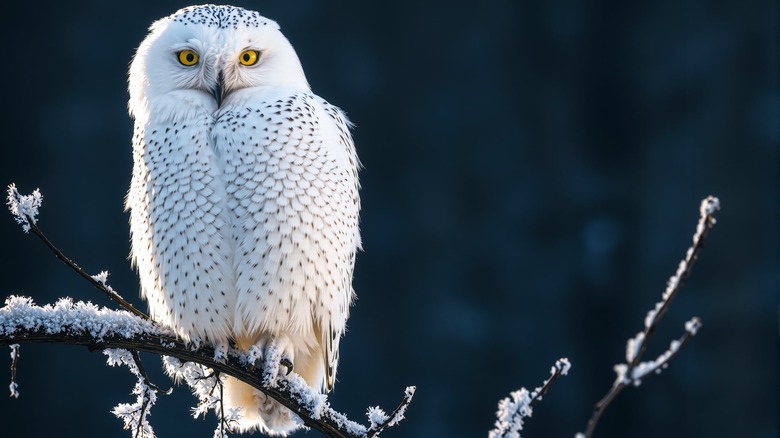The Nocturnal Bird That Used To Be Eaten Throughout The US
The passage of time has certainly altered what is considered acceptable dining fare. Charles Darwin, for example, was known to indulge in meat consumption that would not only be deemed bizarre in today's world but, in some cases, downright illegal.
In the early 1800s, while at Cambridge University, Darwin was a member of the Glutton Club, a student group with a mission to eat birds and animals not normally consumed by humans. The club's foray into the strange included eating hawk, bittern, and owl. Eating owl, however, wasn't restricted just to that group of adventurous university students — owl meat was widely consumed in the United States before the animal ultimately became a protected species under the Migratory Bird Treaty Act of 1918.
These days, it's not only highly illegal to eat an owl in the U.S., you can't even possess one of their feathers. But not so long ago, people across the North American continent utilized the bird as both a food source and for the purported medicinal properties they were believed to possess.
The owl as food and medicine
You may think only a Dementor would ever consider consuming the meat of an owl — eat Hedwig? Never! But in times gone by, various tribes of Native Americans not only ate owls, but also used them for both their physical and spiritual medicinal properties, including utilizing the leftover oil after cooking an owl as a medicine. The Creole people in Louisiana in the 1700s were also known to include the meat of barred owls in their cuisine. While their exact recipes aren't known today, it's surmised that their forebears brought the practice from Africa, where owls were commonly roasted or stewed.
For general American consumers in those days, all kinds of birds were available to them in public marketplaces. "The Market Assistant," written by Thomas F. De Vo and published in 1867, was a comprehensive guidebook detailing the various types of food sold in the public markets in New York, Boston, and Philadelphia in that time period, and it included over 100 species of birds. The book also includes anecdotes about shooting and consuming owls, including the author's own experience hunting a barred owl.
However, The Migratory Bird Treaty Act of 1918 put an end to the hunting of many bird species, including 17 species of owls, and today you won't find its meat on the menu of any restaurant in the U.S. This is probably a good thing, since Charles Darwin and his school chums reportedly disliked owl meat so much that they disbanded their society after attempting to eat it.


